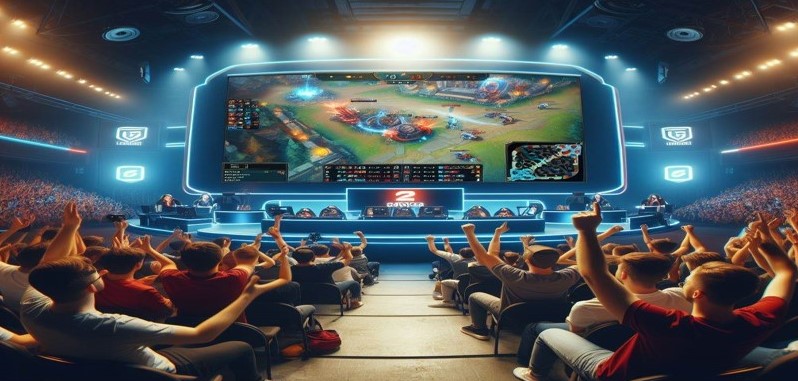In the fast-paced world of esports, where digital prowess meets competitive gaming, the notion of spectatorship has undergone a profound transformation. Gone are the days of passive viewership, replaced instead by an era defined by interactivity, community engagement, and personalized experiences. As we delve into the landscape of esports viewership in 2024, we find ourselves at the dawn of Fan Engagement 2.0 – a paradigm shift that has redefined the relationship between fans and the virtual arenas they inhabit. Moreover, it works not only in esports, but also in related markets, such as csgo gambling, although this is another topic for conversation.
In this article, we embark on a journey through the evolution of esports viewership, drawing on real-world examples from the past decade that have shaped the industry’s trajectory. From the pioneering efforts of interactive streaming platforms to the grassroots movements of fan communities, we uncover the multifaceted layers of fan engagement in the digital age. Furthermore, we examine the rise of personalized content delivery and cross-platform accessibility, highlighting successful case studies and best practices that have propelled esports into the mainstream.
As we navigate through these dynamic shifts and trends, it becomes evident that Fan Engagement 2.0 is not merely a buzzword but a fundamental reimagining of the esports experience. By embracing interactivity, fostering communities, delivering personalized content, and prioritizing accessibility, esports organizations are forging deeper connections with their audiences, ushering in a new era of immersive and inclusive entertainment. Join us as we unravel the intricacies of this evolution and glimpse the future of esports viewership in 2024 and beyond.
Interactive Viewing Experiences
The concept of interactive viewing experiences in esports has been on the rise for several years, with platforms seeking innovative ways to engage fans in real-time. One notable example is Twitch, the leading live streaming platform for gamers. Twitch introduced features like “Twitch Plays Pokémon,” where viewers collectively controlled the gameplay by inputting commands through the chat. This experiment showcased the potential for audience interaction, garnering widespread attention and demonstrating the power of community-driven experiences.
Similarly, Riot Games, the developer behind “League of Legends,” launched the “League of Legends: Pro View” feature, allowing fans to customize their viewing experience by switching between different player perspectives during live matches. This level of immersion and control resonated with fans, enhancing their connection to the game and its players. These initiatives paved the way for more interactive features, such as live polls, viewer-controlled cameras, and in-game rewards, which have become commonplace in esports broadcasts today.
Community Building and Social Engagement
The importance of community building and social engagement in esports cannot be overstated, and several organizations have successfully leveraged these principles to foster vibrant and inclusive communities. Take, for example, the Overwatch League and its emphasis on fan engagement through team-specific fan clubs and events. The league’s commitment to creating opportunities for fans to connect with each other and with their favorite teams has cultivated a dedicated fan base that actively participates in discussions, shares content, and attends live events.
Additionally, the Dota 2 community is renowned for its passionate fan base and grassroots initiatives. The annual “The International” tournament not only boasts a massive prize pool crowdfunded by fans but also features community-created content, such as in-game cosmetics and merchandise. These contributions not only contribute to the overall prize pool but also enhance the sense of ownership and investment among fans, driving engagement and excitement surrounding the event.
Personalized Content and Recommendations
The trend towards personalized content and recommendations in esports viewership has gained momentum in recent years, with platforms leveraging data analytics and machine learning algorithms to deliver tailored experiences to individual fans. A prime example is YouTube Gaming, which utilizes recommendation algorithms to suggest relevant esports content based on a user’s viewing history and preferences. By surfacing content that aligns with each fan’s interests, YouTube Gaming enhances the discoverability of esports content and keeps fans engaged for longer periods.
Another notable example is Spotify’s “Gaming Hub,” which curates playlists specifically tailored to gamers and esports enthusiasts. By analyzing listening habits and preferences, Spotify delivers playlists that complement gaming sessions and esports viewing experiences, creating a seamless and immersive environment for fans. These personalized recommendations not only enhance fan satisfaction but also present opportunities for advertisers and sponsors to reach targeted audiences with relevant content and promotions.
Cross-Platform Integration and Accessibility
The importance of cross-platform integration and accessibility in esports cannot be overstated, as it enables fans to access content anytime, anywhere, and on any device. One organization leading the charge in this regard is ESL (formerly known as the Electronic Sports League), which has embraced multi-platform streaming services and mobile apps to reach a wider audience. ESL’s partnership with platforms like Twitch, YouTube Gaming, and Facebook Gaming ensures that esports content is readily available across various devices, catering to the preferences and lifestyles of fans worldwide.
Additionally, efforts to improve accessibility through live captioning, audio descriptions, and language localization have made esports events and tournaments more inclusive and welcoming to diverse audiences. For example, the “Call of Duty League” introduced live captioning for its broadcasts, ensuring that viewers with hearing impairments can fully enjoy the action. Similarly, Riot Games offers language localization for its “League of Legends” broadcasts, allowing fans from different regions to engage with the content in their native language.
Conclusion
As we reflect on the evolution of esports viewership in 2024 and beyond, it is evident that Fan Engagement 2.0 has ushered in a new era of immersive and interactive experiences. From the pioneering efforts of interactive streaming platforms to the vibrant communities and social engagements that underpin the esports ecosystem, every facet of the industry has been transformed by the principles of interactivity, community building, personalization, and accessibility. As esports continues to captivate audiences worldwide, the possibilities for fan engagement are limitless, promising a future where fans are not just spectators but active participants in the virtual worlds they inhabit.
